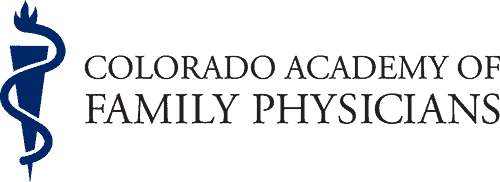Is there a doctor onboard?
By Riley Stanton, CAFP Communications and Marketing Intern
In-flight medical emergencies (IME) are often dramatized on television and in movies, but how often do they actually happen? With an average of nine million passengers every day, it may be more often than you think. Past research estimates that medical emergencies occur in 1 in every 604 flights1. Less than 10% of these IMEs are severe enough to warrant diversion of the flight. As the population ages and more people with chronic medical conditions fly, IMEs are expected to increase. All physicians should expect to encounter an IME in their lifetime and know what to do when one occurs.
Several factors lead to these emergencies, including pre-existing illness, psychological stress, and physiological stresses from the cabin pressure and flight duration. Even young, healthy passengers experience mild hypoxia from the decreased barometric pressure inside the cabin2. In longer, international flights, prolonged sitting, sleep deprivation and circadian misalignment also play a role.
While assistance from an experienced and licensed health professional is preferred, there is no guarantee one will be on-board if and when an IME occurs. The flight crew consults a ground-based medical team to make decisions on appropriate interventions and whether or not to divert the flight for patient safety. Any medical volunteers who respond to an IME will collaborate with the ground-based medical support team, who make all final decisions.1
The most common IMEs are syncope (30%), gastrointestinal illness (15%), and respiratory distress (10%), which rarely necessitate the diversion of the flight. Even more severe IME, such as a cardiac event (7%), potential stroke (5%), and obstetric emergencies (1%), are often better handled by proceeding to the intended destination. The pilot makes these decisions based on medical volunteer recommendation, ground-based medical support team recommendation, and flight status. In some cases, the nearest airport equipped to handle the situation is the intended destination.
Generally, the assisting physician will be asked to gather information, asses the patient, collaborate with the ground-based medical support team, and administer medications or perform minor procedures. Caring for a patient during an IME requires ingenuity comparable to practicing wilderness medicine. The physician must work with limited equipment in a small, poorly lit, unstable environment. In the United States, you can expect to find an automatic external defibrillator, hemorrhage control kit, equipment to initiate an intravenous line, and medications for the most common conditions. Some US airlines may have a more extensive medical kit, and airlines operating out of other countries may have different contents.1,2
If you find yourself on a U.S. carrier when an IME occurs, and are capable of assisting, the Aviation Medical Assistance Act of 1998 (a “Good Samaritan” shield) will protect you should anything go wrong, with the exception of misconduct or gross negligence1. In the U.S., your assistance is entirely voluntary, and you are not required to provide proof of a medical license. However, having these documents available to share with the flight crew is reassuring in your ability to provide care.1
- Martin-Gill, et al., In-Flight Medical Emergencies: A Review. JAMA, 2018. 320(24): p. 2580-90.
- Ruskin, In-Flight Medical Emergencies: Who, What, and How Many? Anaesthesia and Intensive Care, 2019. 47(1): p. 10-12.
